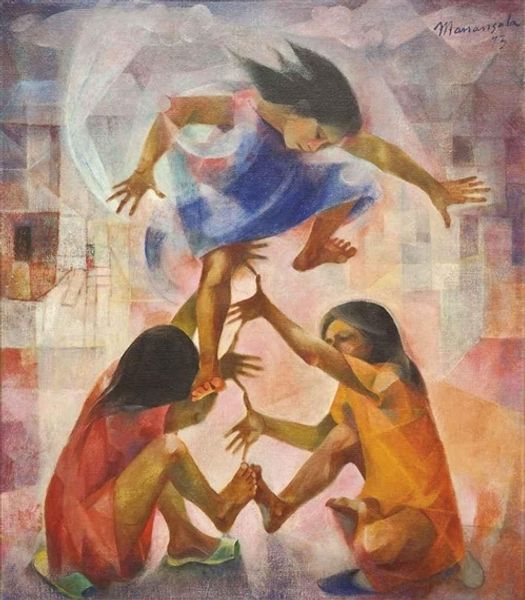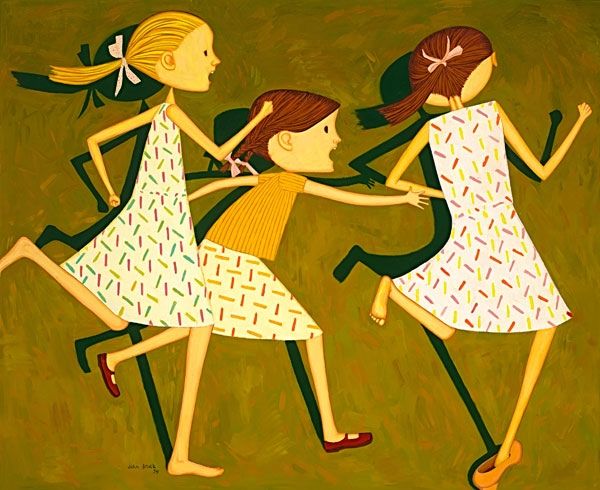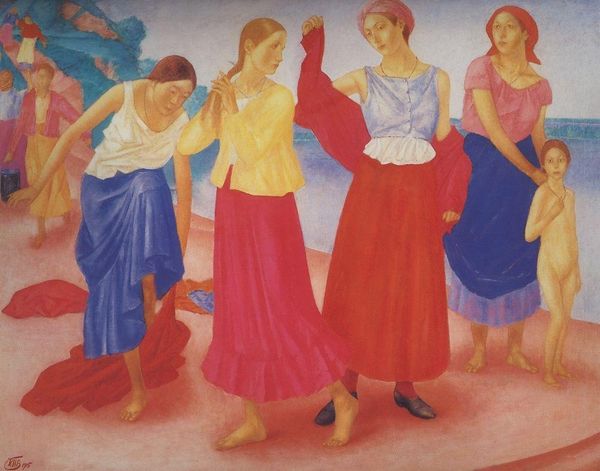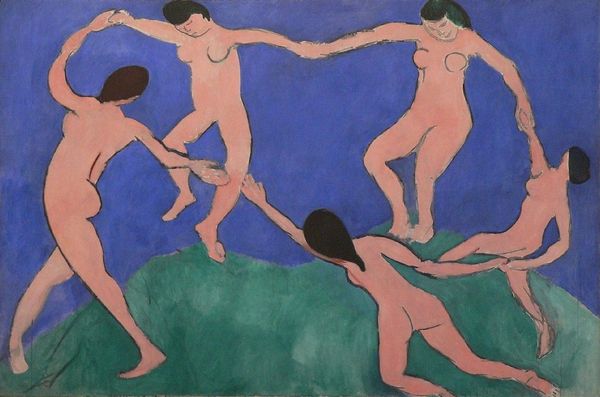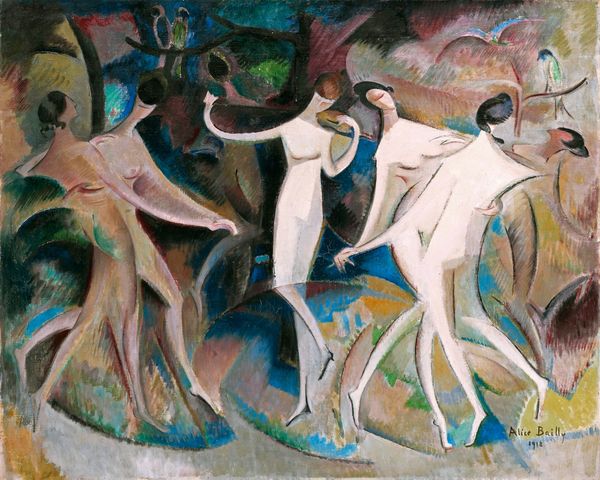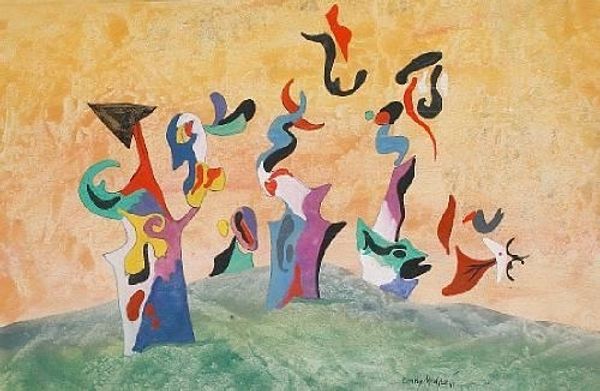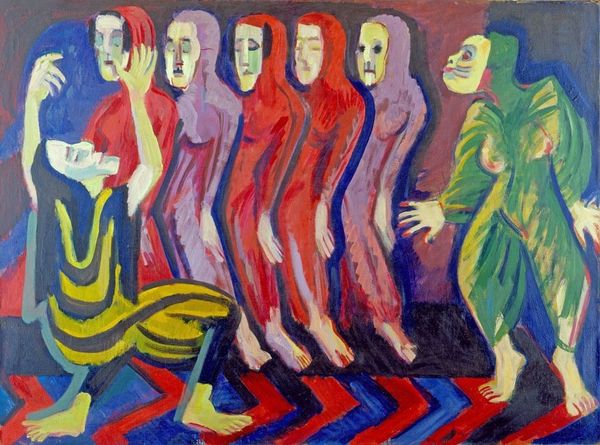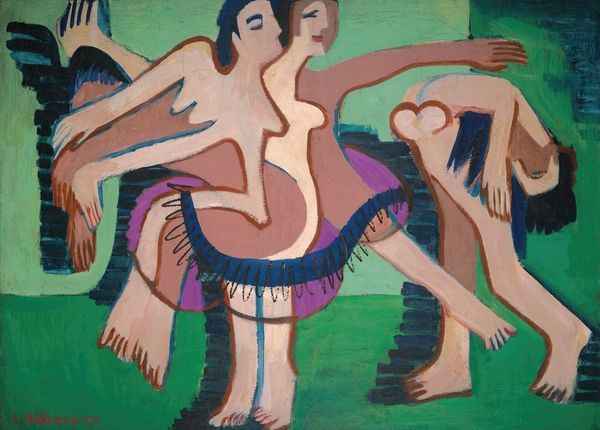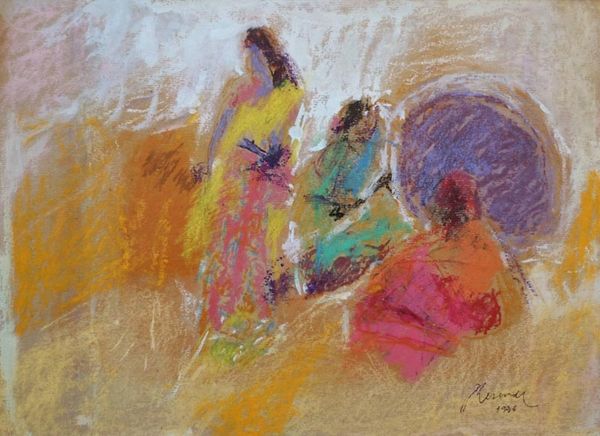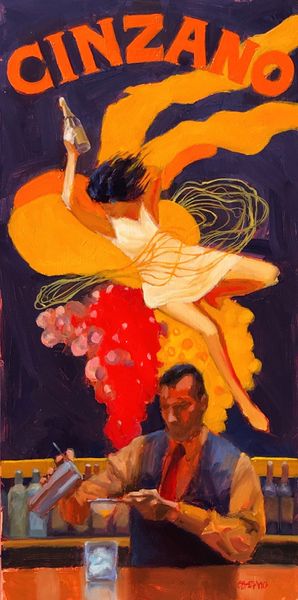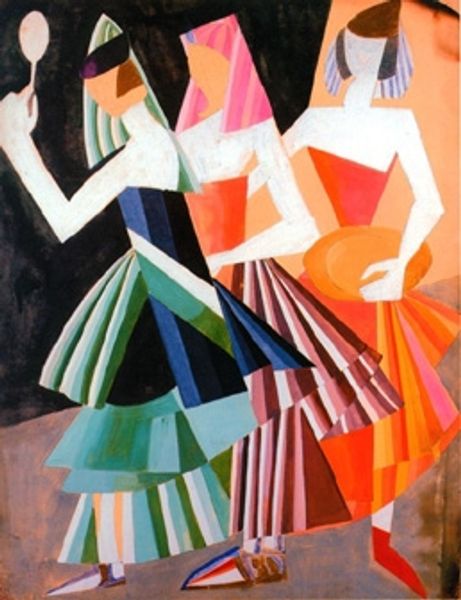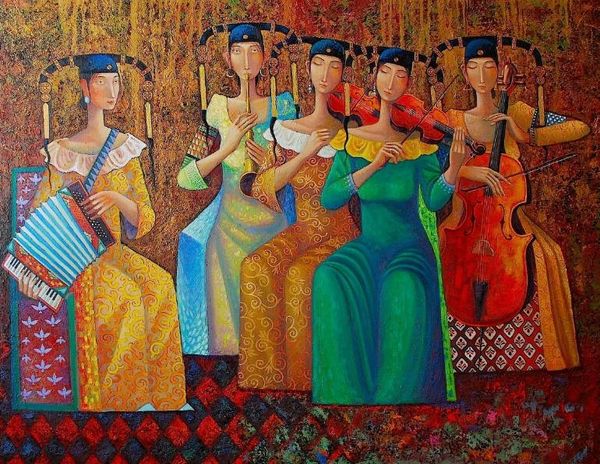
acrylic-paint
#
abstract expressionism
#
fauvism
#
fauvism
#
acrylic-paint
#
figuration
#
neo expressionist
#
acrylic on canvas
#
neo-expressionism
#
painting art
#
genre-painting
Copyright: Zaya,Fair Use
Curator: This vibrant piece is simply titled "Dance," and the artist known as Zaya worked with acrylic on canvas to realize it. What do you think initially? Editor: It’s certainly dynamic! The elongated limbs and the swirling composition, all set against that textured background... It almost feels like a celebration frozen in time, though a little melancholic due to the closed eyes and placid expressions. Curator: I agree about the dynamic quality. It is compelling when we consider Zaya's work within a broader socio-historical context. Think about art's role in capturing and often shaping cultural expressions of movement. Genre paintings, such as "Dance", capture fleeting moments and societal rituals, elevating everyday actions into statements about communal life. Editor: Right, it reminds us of the function of social gatherings. But I’m more drawn to the tangible aspects, the very act of creation involved. Look at the impasto effect on that backdrop, how Zaya has used varying paint densities to create depth. You can imagine the artist at work, layering and building, almost sculpting with paint to animate the subjects in "Dance." It is exciting to appreciate that labor. Curator: It certainly does show a strong Fauvist influence with its bold, non-naturalistic use of color to convey emotion. Fauvism was a movement that disrupted formal conventions. Similarly, there’s a Neo-Expressionist quality as well, with the emphasis on subjective feeling and raw emotion translated onto the canvas. This emotive language allowed the artist to challenge expectations within traditional social structures. Editor: I appreciate how you linked those styles. And seeing the painting through the lens of materials… notice the color palette's restricted tonal range for the skin? This, combined with elongated limbs gives each dancer the appearance of clay, of being constructed. The image speaks to artistic intervention in form and surface, pushing beyond mere representation. I would be curious to know the artist’s choice to produce more than one of these artworks, and see these lined up as a presentation of bodies being assembled through materials. Curator: It's that tension between individual expression and communal identity that keeps it fascinating. What I’m taking away is that art like this reflects the dynamism and vibrancy of human interactions and connections—within a particular cultural and historical setting. Editor: Indeed! And, for me, the magic is seeing the raw materials transform into these powerful figures, making visible the processes of both artistic creation and our own construction of meaning.
Comments
No comments
Be the first to comment and join the conversation on the ultimate creative platform.
